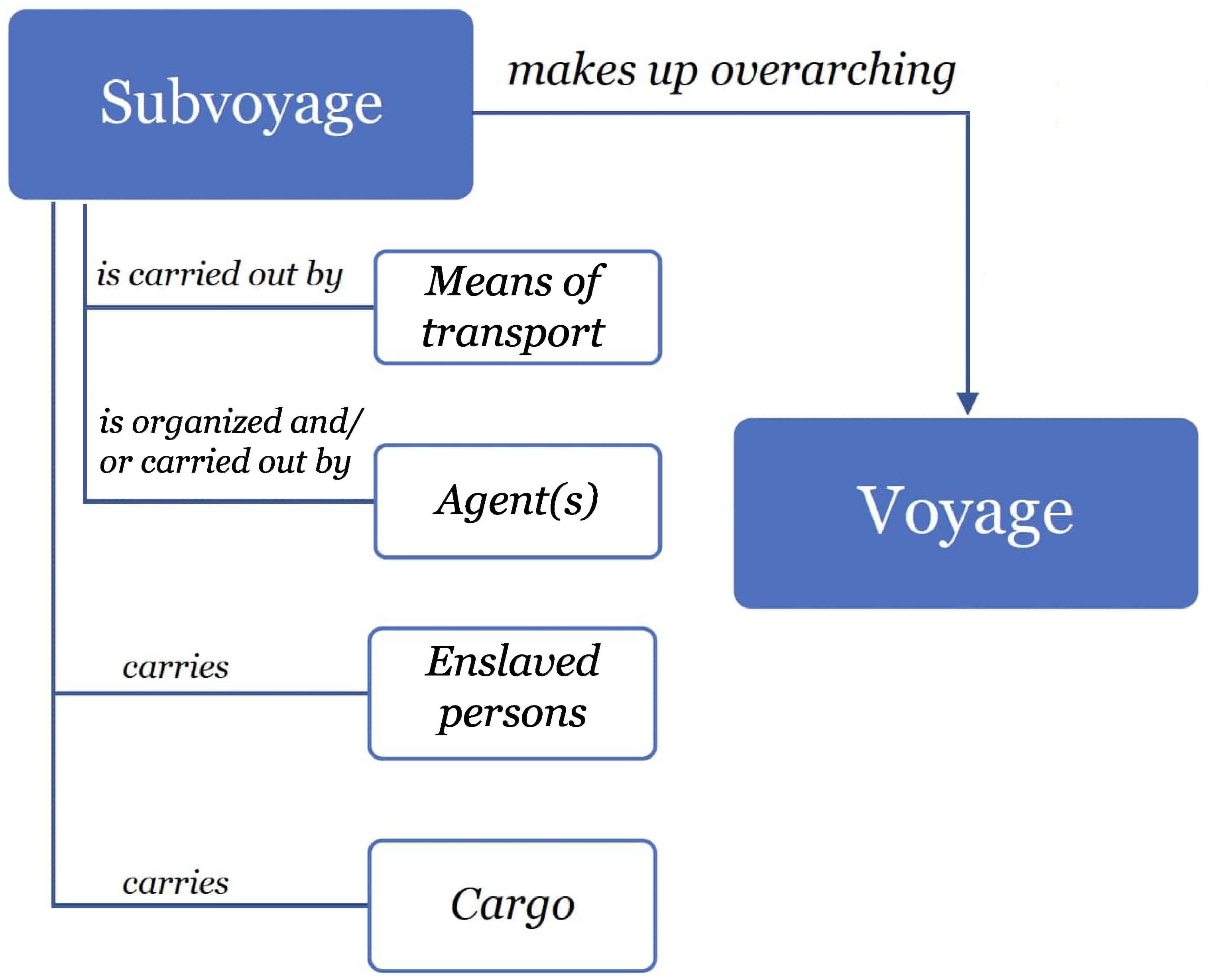This Quick Guide demonstrates how to locate and try out the Database's main functions.
Browsing (sub)voyages
If you want to browse (sub)voyages, go to Voyages and either select one from the list, or narrow down your selection by selecting a departure/arrival location and/or a year range. Regarding locations, the terms that these general selection filters search in for departure and arrival locations are the locations as in the sources, their names in standardized form per the ESTA Database Locations dataset, and the overarching summary. For more specific searches, please see Searching (sub)voyages below. Furthermore, please note that pagination is used to limit the results to 50 voyages per page.
Searching (sub)voyages
Searching for particular (sub)voyages can be done by using Advanced Search, which will present you with plenty of searchable variables, including personalia, vessel names and departure/arrival months. Please note that the advanced search bypasses the departure and arrival years by default, since not every subvoyage has a dedicated, standardized departure year attached to it. If you want to search for a specific range of years, please disable this filter. With the filter engaged, you can also search for voyages that were undertaken in particular months; providing, for example, researchers focusing on seasonal shipping ample research tools. Advanced search results can be seen by clicking either on the voyage or directly on the subvoyage details page.
⤷ Please note that at this stage, the personalia of enslaved persons/groups/agents, vessel names, and cargo details have not been standardized yet.
Browsing subvoyage details
On the Subvoyage details page, the data that the ESTA Database contains on a particular subvoyage is listed in five data sections (for more information on these sections, see Database Structure and Database Sections in the documentation below). These sections each provide users with coherent data. Functions include presenting the database's Vocabulary definitions by hovering over variables, and showing the data on standardized locations of this subvoyage that the ESTA Database Locations dataset contains by hovering over location names. When enslaved groups, agents or cargo have been linked to this subvoyage, data on these particularities will automatically show in the aforementioned data sections.
Using the graph function
On the Voyages page, you will also find a graph button on the right. This tool provides an insight into the number of subvoyages and voyages that the ESTA Database contains, as well as the minimum numbers of enslaved people that were transported during these (sub)voyages. The graphs will alter when the selection input is changed. For example, when entering the years '1700' to '1750', and entering 'Batavia' as arrival location, the graphs will change accordingly. The graph function will also be included for the advanced search results in due time.
Using the maps
On the Maps page, we have multiple interactive maps representing the ESTA Database's data on the number of enslaved persons. All maps have a range function, limiting the years of the selection by dragging its outer limits. This way, and only this way, the 'Play' button can be used as well. By clicking on locations, they will be selected; multiple selections are possible by holding the Shift key whilst clicking, or by typing in locations in the 'Filter by origin and destination...' in the first place. These locations can also be shown as 'Incoming from selected' (enslaved persons to a location) and 'Outgoing from selected' by clicking the cog symbol in the 'Filter' section. Furthermore, hovering over routes or locations will result in total numbers of enslaved people being shown.
⤷ Please note that a disclaimer has been included, providing additional documentation on these maps.

